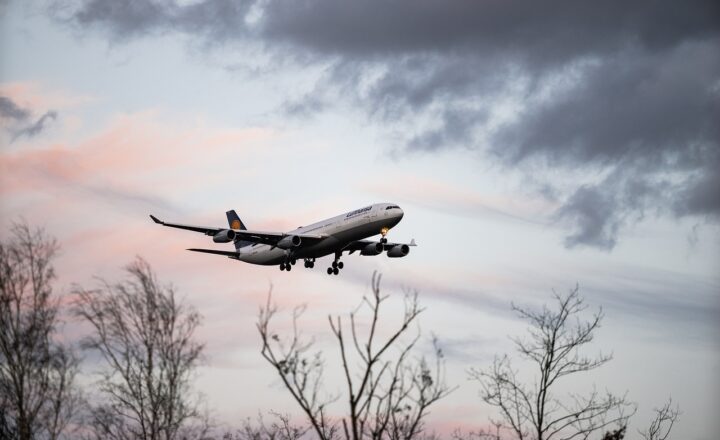The Technologies Keeping Airplanes Safe from Bird Strikes and Mid-Air Collisions
November 12, 2024

Air travel is one of the safest forms of transportation, thanks in large part to advancements in technology that have continually improved aircraft safety. Among the myriad challenges that pilots and aircraft designers face, bird strikes and mid-air collisions stand out as two critically dangerous situations that require sophisticated solutions. In this article, we will delve into the technologies that play a pivotal role in keeping airplanes safe from these threats.
1. Understanding Bird Strikes and Their Impact
A bird strike occurs when a bird collides with an aircraft, usually during takeoff or landing. The Federal Aviation Administration (FAA) estimates that bird strikes have increased significantly with the modernization of airports and aircraft. Although most bird strikes do not result in significant damage, they can lead to severe incidents if they involve critical engine components or if the aircraft is engaged in complex maneuvers.
Common bird strike statistics indicate that:
- Approximately 13,500 bird strikes are reported annually in the United States alone.
- About 95% of bird strikes occur below 3,000 feet during takeoff or landing.
- Major incidents, although rare, can lead to substantial damages and loss of life.
The consequences of a significant strike can be detrimental, which prompts the aviation industry to invest heavily in technologies that mitigate these risks.
2. Bird Detection Systems: The Future of Safety
Advancements in radar technology have led to the development of bird detection systems capable of monitoring bird movements in the vicinity of airports. These systems utilize:
- Radar Technology: Modern radar systems like the Advanced Bird Detection (ABD) radar can track avian movements in real-time. By identifying species, flight paths, and altitudes, airports can effectively warn pilots and ground crews about impending bird activity.
- Predictive Modeling: Using historical data, predictive modeling software can forecast when and where bird strikes are most likely to occur, allowing for proactive measures such as closing runways or modifying flight schedules.
These systems play a crucial role in ensuring that bird strikes are minimized, particularly during peak migration seasons.
3. Airborne Collision Avoidance Systems (ACAS)
Mid-air collisions pose a significant risk, primarily due to the increasing number of aircraft in the sky. To counter this threat, airlines and aviation authorities have developed Airborne Collision Avoidance Systems (ACAS), which are designed to alert pilots of potential collisions.
Key features include:
- Transponder Technology: Equipped with transponders, ACAS can detect nearby aircraft by receiving signals and provide situational awareness to pilots.
- Traffic Alert and Collision Avoidance System (TCAS): TCAS is integrated into modern aircraft, providing alerts and instructions to pilots on potential conflicts, greatly reducing the chances of mid-air collisions.
This system has been instrumental in improving safety records, with studies showing that it has increased the effectiveness of avoiding mid-air collisions.
4. Flight Management Systems (FMS)
Modern aircraft are equipped with advanced Flight Management Systems (FMS), which not only aid in navigation but also play a key role in managing air traffic safely. These systems integrate data from various sources:
- Real-Time Traffic Information: FMS collect traffic data to optimize routes and avoid congested airspace, which can help in maintaining safe distances from other aircraft.
- Automated Decision-Making: In situations where immediate decisions are required, FMS can suggest optimal evasion routes to pilots, thus minimizing the chance of mid-air collisions.
The use of FMS has revolutionized air travel efficiency and safety, ensuring that contemporary aircraft operate within a framework of minimized risk.
5. Pilot Training and Simulators
Technology does not solely reside in machinery; enhancing human skills is crucial for overall safety. Airline pilots undergo rigorous training that includes:
- Simulator Training: Flight simulators replicate potential hazards such as bird strikes and mid-air collisions. Training with real-life scenarios helps pilots devise appropriate responses and manage stress during emergencies.
- Situational Awareness Exercises: Effective training programs emphasize the importance of maintaining situational awareness to recognize potential threats before they escalate.
This preparation is vital to ensure pilots can utilize modern systems to their fullest potential while remaining capable of making quick, informed decisions in high-pressure situations.
6. The Role of Airport Management
While pilots and technology play significant roles, effective airport management is key to minimizing both bird strikes and mid-air collisions. Airports proactively implement:
- Wildlife Hazard Management Plans: These plans include habitat modifications, vegetation management, and wildlife monitoring to deter birds from the vicinity of runways.
- Runway Management: Efficient scheduling and management of takeoffs and landings can reduce congestion, thereby minimizing mid-air collision risks.
With strategic planning, airports can create safer environments for flights entering and departing.
7. The Future of Aircraft Safety Technology
As technology continues to evolve, air travel safety will further improve. Emerging technologies on the horizon include:
- Artificial Intelligence: AI could enhance predictive analytics in bird detection systems, improving safety measures further by providing real-time decision-making assistance.
- Advanced Weather Systems: Predictive analytics can help forecast hazardous weather and wildlife movements, giving airlines tools for risk management in real-time.
With continuous investment in research and development, the aviation industry strives to maintain its reputation as the safest mode of transportation available.
Conclusion
In conclusion, the aviation industry has seen significant advancements in technologies that mitigate the risks associated with bird strikes and mid-air collisions. Through a multi-faceted approach that includes sophisticated detection systems, collision avoidance technologies, and enhanced pilot training, modern aircraft are safer than ever. As innovations continue to emerge, we can expect even more significant improvements, securing the skies for all who travel by air.
When it comes to air travel, one universal truth remains: an ounce of prevention is worth a pound of cure. Hence, safety will always come first, guided by technology and its potential to safeguard passengers and crew alike.







